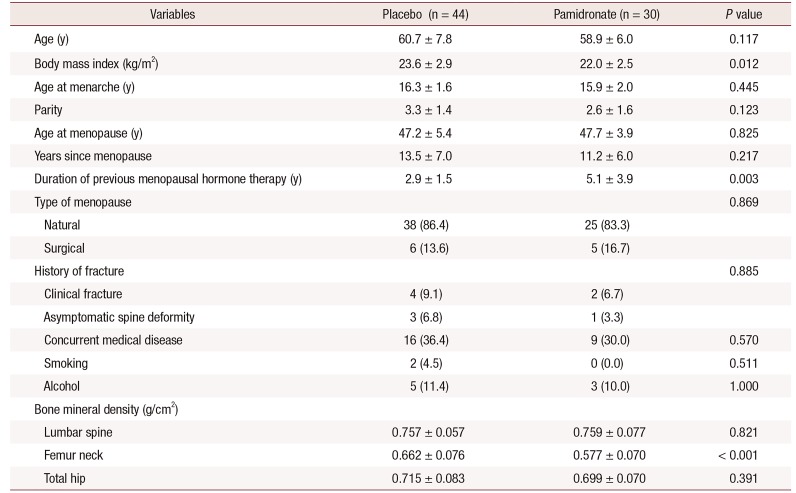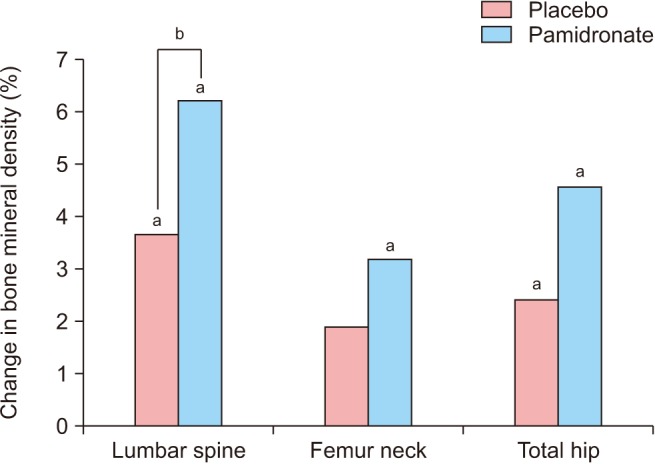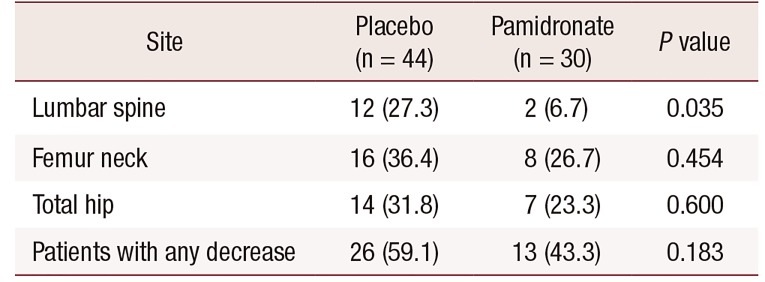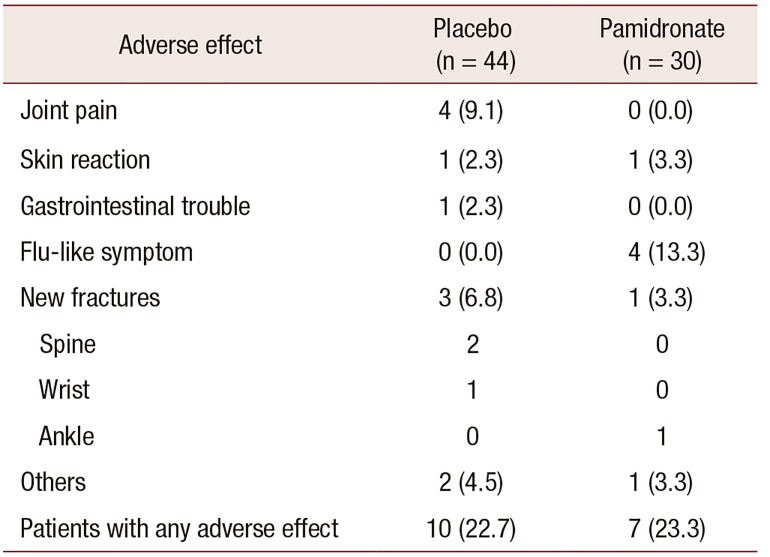1. Effects of hormone therapy on bone mineral density: results from the postmenopausal estrogen/progestin interventions (PEPI) trial. The Writing Group for the PEPI. JAMA. 1996; 276:1389–1396. PMID:
8892713.
2. Nelson HD, Rizzo J, Harris E, Cauley J, Ensrud K, Bauer DC, et al. Osteoporosis and fractures in postmenopausal women using estrogen. Arch Intern Med. 2002; 162:2278–2284. PMID:
12418942.

3. Hillard TC, Whitcroft SJ, Marsh MS, Ellerington MC, Lees B, Whitehead MI, et al. Long-term effects of transdermal and oral hormone replacement therapy on postmenopausal bone loss. Osteoporos Int. 1994; 4:341–348. PMID:
7696830.

4. Fleisch H. Bisphosphonates: mechanisms of action. Endocr Rev. 1998; 19:80–100. PMID:
9494781.

5. Black DM, Cummings SR, Karpf DB, Cauley JA, Thompson DE, Nevitt MC, et al. Randomised trial of effect of alendronate on risk of fracture in women with existing vertebral fractures. Fracture Intervention Trial Research Group. Lancet. 1996; 348:1535–1541. PMID:
8950879.
6. Liberman UA, Weiss SR, Bröll J, Minne HW, Quan H, Bell NH, et al. Effect of oral alendronate on bone mineral density and the incidence of fractures in postmenopausal osteoporosis. The Alendronate Phase III Osteoporosis Treatment Study Group. N Engl J Med. 1995; 333:1437–1443. PMID:
7477143.
7. McClung MR, Geusens P, Miller PD, Zippel H, Bensen WG, Roux C, et al. Effect of risedronate on the risk of hip fracture in elderly women. Hip Intervention Program Study Group. N Engl J Med. 2001; 344:333–340. PMID:
11172164.
8. Boonen S, Laan RF, Barton IP, Watts NB. Effect of osteoporosis treatments on risk of non-vertebral fractures: review and meta-0analysis of intention-to-treat studies. Osteoporos Int. 2005; 16:1291–1298. PMID:
15986101.
9. Harris ST, Eriksen EF, Davidson M, Ettinger MP, Moffett AH Jr, Baylink DJ, et al. Effect of combined risedronate and hormone replacement therapies on bone mineral density in postmenopausal women. J Clin Endocrinol Metab. 2001; 86:1890–1897. PMID:
11344179.

10. Min YK, Lee DY, Choi SJ, Kim JH, Choi D, Yoon BK. Effects of adding alendronate to ongoing hormone therapy on bone mineral density in postmenopausal Korean women: a randomized, double-blind, placebo-controlled clinical trial. Menopause. 2013; 20:761–766. PMID:
23403498.
11. Aki S, Eskiyurt N, Akarirmak U, Tüzün F, Eryavuz M, Alper S, et al. Gastrointestinal side effect profile due to the use of alendronate in the treatment of osteoporosis. Yonsei Med J. 2003; 44:961–967. PMID:
14703602.

12. Anckaert E, Öktem M, Thies A, Cohen-Bacrie M, Daan NM, Schiettecatte J, et al. Multicenter analytical performance evaluation of a fully automated anti-Müllerian hormone assay and reference interval determination. Clin Biochem. 2016; 49:260–267. PMID:
26500002.

13. Reid IR, Wattie DJ, Evans MC, Gamble GD, Stapleton JP, Cornish J. Continuous therapy with pamidronate, a potent bisphosphonate, in postmenopausal osteoporosis. J Clin Endocrinol Metab. 1994; 79:1595–1599. PMID:
7989461.

14. Brumsen C, Papapoulos SE, Lips P, Geelhoed-Duijvestijn PH, Hamdy NA, Landman JO, et al. Daily oral pamidronate in women and men with osteoporosis: a 3-year randomized placebo-controlled clinical trial with a 2-year open extension. J Bone Miner Res. 2002; 17:1057–1064. PMID:
12054161.

15. Vis M, Bultink IE, Dijkmans BA, Lems WF. The effect of intravenous pamidronate versus oral alendronate on bone mineral density in patients with osteoporosis. Osteoporos Int. 2005; 16:1432–1435. PMID:
15883662.

16. Kang M. Bisphosphonate. The Korean Society for Bone Mineral Research. Textbook of osteoporosis. 5th ed. Seoul: Koonja;2016. p. 253–265.
17. Bae SJ, Kim BJ, Lim KH, Lee SH, Kim HK, Kim GS, et al. Efficacy of intravenously administered ibandronate in postmenopausal Korean women with insufficient response to orally administered bisphosphonates. J Bone Miner Metab. 2012; 30:588–595. PMID:
22610063.

18. Drake MT, Clarke BL, Khosla S. Bisphosphonates: mechanism of action and role in clinical practice. Mayo Clin Proc. 2008; 83:1032–1045. PMID:
18775204.









 PDF
PDF ePub
ePub Citation
Citation Print
Print




 XML Download
XML Download